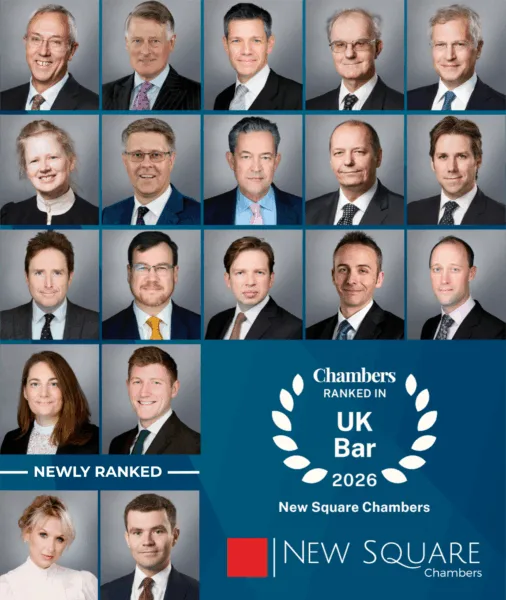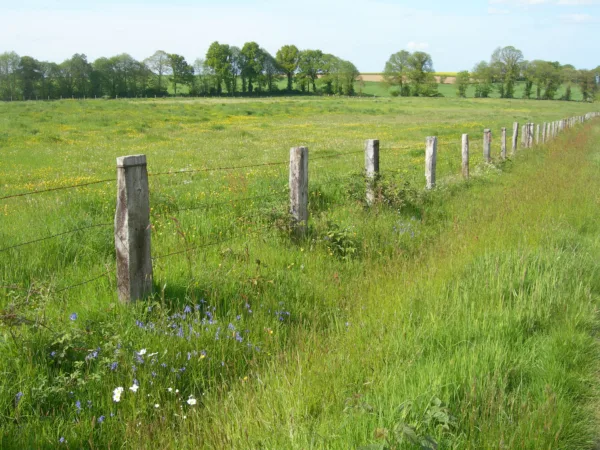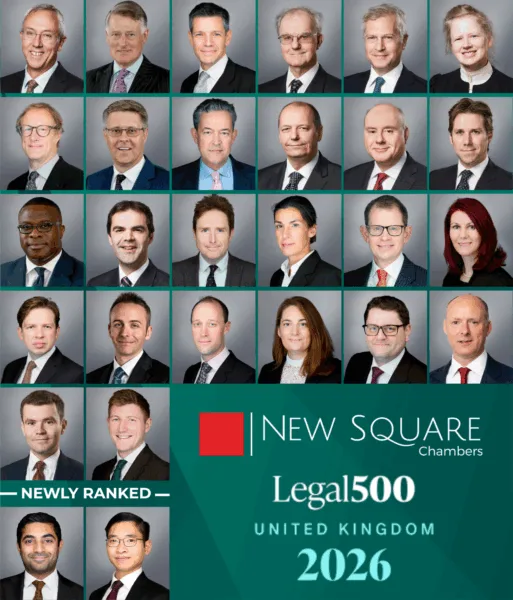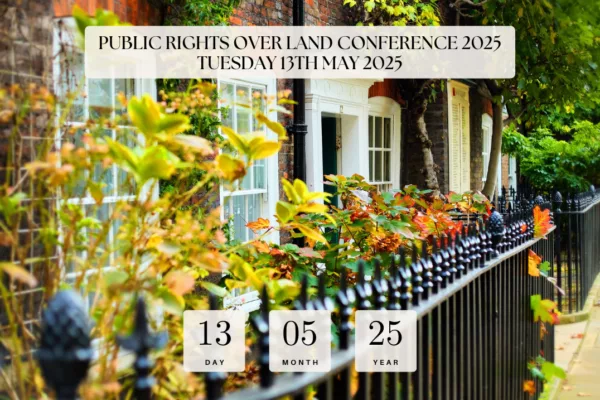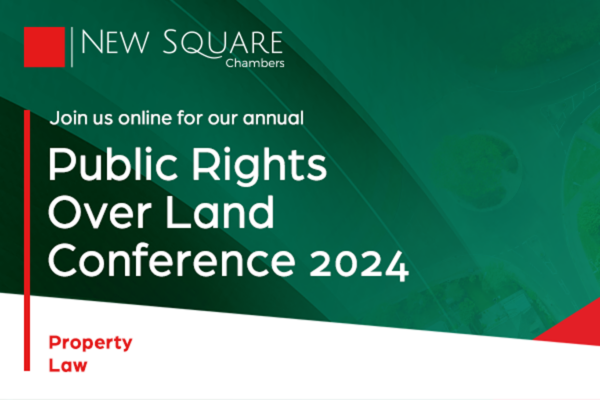Overview
Since qualifying as a barrister in 1986, Ross Crail has acquired extensive experience of advocacy and advisory work in a broad range of Chancery and commercial matters, but her practice is now focused on real property disputes concerning such issues as easements and restrictive covenants.
Clients praise her as “A go-to on public rights of way and common land. She has deep expertise in these matters and can really get to the heart of these issues.” (Chambers & Partners 2025, Band 1 for Agriculture & Rural Affairs) also noting that “She has amazing knowledge and the way she can weave an argument into written form is just very impressive indeed. Her analytical skills are second to none.”(Chambers & Partners 2025 Band 1 for Agriculture & Rural Affairs).
She is best known for her expertise in the law of highways, common land, town and village greens, and public and private access issues, and has long been ranked by Chambers & Partners and Legal 500 as a leading junior for agriculture and rural affairs and property litigation. She advises and represents local authorities, landowners, developers, members of the public, and interested organisations such as The Ramblers’ Association, the Open Spaces Society and the British Horse Society. She has taken part in numerous public local inquiries and has considerable experience of related litigation, including judicial reviews and statutory appeals, as well as sometimes acting as an inspector conducting inquiries into town/village green applications on behalf of registration authorities.
Ross has contributed to the development of the law in those fields through her involvement in some of this century’s landmark cases including Godmanchester, Oxfordshire, Paddico and Lewis up to House of Lords/Supreme Court level. She appeared as an advocate in the first cases to reach the courts on issues such as the correct approach to conflicts between definitive map and definitive statement, stopping up for crime prevention, alleygating, and stopping up/diversion for defence purposes.
She has advised national bodies such as the former Countryside Agency and contributed to Defra Guidance. In addition to regularly speaking on the above topics over the years at chambers seminars and conferences organised by other providers such as the Chancery Bar Association, Property Bar Association, Rights of Way Law Review and Central Law Training, she wrote numerous articles for the Rights of Way Law Review and was a long-standing member of its editorial board.
Property
Ross has frequently been instructed to advise in connection with private rights of way, and been involved in proceedings seeking remedies for denial of such rights and interference with their exercise, typically by the erection of gates or building operations.
Instructions of that nature often overlap her other fields of expertise, entailing consideration of questions such as whether private rights to drive and park can lawfully have been acquired by prescription over a common, a town/village green, or a public footpath or bridleway, or vehicular use would have contravened statutory prohibitions or amounted to the common law offence of public nuisance.
She has advised national housebuilding companies and other developers regarding rights of access to potential development sites, including in situations where the existence of a ransom strip separating the development site from the adjacent highway was asserted.
Ross has also been instructed in a variety of other real property matters, including in particular disputes about:
- easements of other kinds, such as rights to light or drainage;
- customary rights, such as a right to access the bank of a navigable river to fish for elvers;
- the interpretation, enforceability, and enforcement of restrictive covenants, applications to the Lands Tribunal for their variation or discharge under section 84(1) of the Law of Property Act 1925, and applications to the High Court under section 84(2) of the Law of Property Act 1925 for declarations of non-enforceability;
- the acquisition of title to land by adverse possession;
- boundary disputes.
Highways
Ross has established herself as a specialist advocate and adviser in the field of highway law. She has extensive experience of litigation at all levels from the magistrates’ courts to the Supreme Court, and in the forum of public local inquiries.
- She has often been instructed in disputes as to whether a highway has been created by deemed dedication under section 31 of the Highways Act 1980 or common law dedication; for example, she assisted Greenwich London Borough Council in the collection and presentation of evidence for the existence of a public footpath around the edge of the North Greenwich Peninsula, culminating in the grant of a declaration to that effect in High Court proceedings against multiple defendants.
- She has advised highway authorities and landowners regarding disputes as to the inclusion of ways in lists of streets kept under section 36(6) of the Highways Act 1980, and associated proceedings for declaratory relief.
- She has made several successful applications to magistrates’ courts on behalf of highway authorities seeking stopping up orders under section 116 of the Highways Act 1980.
- She has appeared at inquiries on behalf of highway authorities to present the case for extinguishment and diversion orders pursuant to other provisions in the Highways Act 1980 and the Town and Country Planning Act 1990, including section 119B(1)(b) of the 1980 Act (diversion of highway crossing school premises) and sections 257 and 261 of the 1990 Act (temporary diversion for mineral working purposes).
- She has advised and represented landowners and The Ramblers’ Association in connection with applications for, and objections to, extinguishment and diversion orders, and challenges to confirmed orders.
- She has provided advice and representation to highway authorities, landowners and others regarding the operation of the provisions in section 67 of the Natural Environment and Rural Communities Act 2006 for automatic extinguishment of public rights of way for mechanically propelled vehicles, and the interpretation and application of the exceptions from extinguishment.
- She has advised highway authorities and others including The Ramblers’ Association regarding the scope of the duty of maintenance under section 41 of the Highways Act 1980, and the merits of particular applications to enforce that duty under section 56 of the 1980 Act, in a wide variety of factual settings; and addressed the interplay between the section 41 duty, the duty to prevent obstructions under section 130 of the 1980 Act, and the powers to make traffic regulation orders restricting public use under the Road Traffic Regulation Act 1984.
- She has provided advice and representation to The Ramblers’ Association and others in connection with the provisions for enforcement of the section 130 duty in sections 130A – 130C of the Highways Act 1980.
- She has advised highway authorities and others regarding disputes about the existence of lawful authority for structures such as gates on highways.
- She has given advice about the placement of advertising boards on pavements, and successfully defended an application in the West London Magistrates’ Court under section 152 of the Highways Act 1980 for removal of advertising boards from outside a shop in Kensington High Street on the ground that they were on a private forecourt outside the highway boundary.
- She has advised highway authorities and members of the public regarding liability for accidents associated with trees, structures, ground conditions or activities on or near highways.
- She has frequently appeared at inquiries to present the case for or against the confirmation of definitive map modification orders made under section 53 of the Wildlife and Countryside Act 1981.
- She has advised surveying authorities, landowners, and others regarding the merits of proposed or actual definitive map modification orders, potential grounds of objection, and preparations for inquiries.
- She has advised and acted for parties disappointed by the outcome of inquiries into definitive map modification orders, on several occasions obtaining the Secretary of State’s consent to a quashing order (for example, in three separate judicial review claims by The Ramblers’ Association based on errors in the inspectors’ approaches to inclosure award evidence).
- She has advised surveying authorities about exercising the powers to prepare consolidated definitive maps and statements under sections 57 and 57A of the Wildlife and Countryside Act 1981.
- She has advised surveying authorities regarding interpretation and (if necessary) modification of definitive maps and statements in cases of uncertainty and internal inconsistency.
- She has advised interested organisations regarding the legality of draft regulations proposed to supplement public right of way provisions in the Countryside and Rights of Way Act 2000 and the Deregulation Act 2015.
Ross’s cases in these fields of law include the following:
- R(Godmanchester Town Council and Drain) v Secretary of State for Environment, Food and Rural Affairs [2007] UKHL 28, [2008] 1 AC 221, in which the House of Lords allowed the claimants’ appeals against the decisions of the High Court [2004] EWHC 1217 (Admin), [2005] 1 WLR 926 and Court of Appeal [2005] EWCA Civ 1597, [2006] QB 727, and construed section 31(1) of the Highways Act 1980 (deemed dedication of highways) as requiring the landowner to have communicated to the public that he had no intention to dedicate if the proviso (“sufficient evidence that there was no intention during that period to dedicate”) is to be satisfied.
- R(Warden and Fellows of Winchester College) v Hampshire County Council [2008] EWCA Civ 431, [2009] 1 WLR 138, where the Court of Appeal ruled in favour of the claimants’ contention that the exception from automatic extinguishment of public vehicular rights under section 67(3) of the Natural Environment and Rural Communities Act 2006 (where there had been pre-existing applications to show them on a definitive map) only applied if there had been strict compliance with the procedural requirements for such applications.
- R(Spice) v Leeds City Council [2006] EWHC 661 (Admin), which provides guidance for highway authorities considering how to respond to requests under section 117 of the Highways Act 1980 to apply for stopping up/diversion orders under section 116 of that Act.
- R(Manchester City Council) v Secretary of State for Environment, Food and Rural Affairs [2007] EWHC 3167 (Admin), where Ross represented The Ramblers’ Association as interested party defending the Secretary of State’s decision not to confirm the claimant’s order in the first case concerning stopping up for crime prevention under section 118B of the Highways Act 1980.
- R(The Ramblers’ Association) v Secretary of State for Defence [2007] EWHC 1398 (Admin), the first known case in which the courts had been called on to consider the powers of extinguishing and diverting footpaths and bridleways for defence purposes conferred by sections 16-17 of the Defence Act 1842.
- The Ramblers’ Association v Coventry City Council [2008] EWHC 796 (Admin), [2009] 1 All ER 130, the first case on the recently introduced legislation for gating alleyways.
- Ernstbrunner v Manchester City Council [2009] EWHC 3293 (Admin), concerning use of the Highways Act 1980 sections 130A-130C procedure in a case where the question whether a footpath was obstructed depended on the disputed interpretation of its route as shown in the definitive map and statement.
- Herrick v Kidner [2010] EWHC 269 (Admin), [2010] PTSR 1804, confirming the availability of the Highways Act 1980 sections 130A-130C procedure in the case of any more than de minimis encroachment on the highway, regardless of whether it impedes public passage.
- Todd v Secretary of State for Environment, Food and Rural Affairs [2004] EWHC 1450 (Admin), [2004] 1 WLR 2471, establishing that the test for confirming a definitive map modification order made under section 53(3)(c)(i) of the Wildlife and Countryside Act 1981 is proof of the existence of the right of way on the balance of probabilities.
- R v Wiltshire County Council, ex p. Nettlecombe Ltd [1998] JPL 707, exemplifying the power of the court to intervene in a definitive map modification process under Part III of the Wildlife and Countryside Act 1981 at any time up to the making of an order in a suitable case where a clear error of law is involved.
- R(Norfolk County Council) v Secretary of State for Environment, Food and Rural Affairs [2005] EWHC 119 (Admin), [2006] 1 WLR 1103, affording guidance on the correct approach to be adopted where there is an appearance of conflict between a definitive map of public rights of way maintained under Part III of the Wildlife and Countryside Act 1981 and its accompanying statement as regards the route of a particular highway.
Common Land & Town/Village Greens
Ross has extensive experience of all aspects of these areas of law.
- She has been selected by various local authorities to act as an inspector and conduct inquiries into town and village green registration applications, some highly controversial (such as Whitstable Beach and Ashton Vale, then the intended site of a new stadium for Bristol City FC).
- She has frequently advised registration authorities regarding the conduct of such applications, for example whether they could be determined without holding an inquiry, or were caught by the trigger event provisions introduced by the Growth and Infrastructure Act 2013.
- She has acted for registration authorities defending their decisions in judicial review proceedings, for example R(Malpass) v County Council of Durham [2012] EWHC 1934 (Admin) and R(Coastal Academies UK Ltd) v Kent County Council (a permission application).
- She was involved as junior counsel for the claimant registration authority in the seminal case of Oxfordshire County Council v Oxford City Council [2004] EWHC 12 (Ch), [2004] Ch 253; [2005] EWCA Civ 175, [2006] Ch 43; [2006] UKHL 25, [2006] 2 AC 674, where the House of Lords issued rulings at the claimant’s request on undecided legal questions as fundamental as whether local inhabitants acquired rights of recreational use over newly registered greens, and on procedural matters such as amendment of applications.
- She has represented applicants for registration of land as a new green, most notably in the case of Warneford Meadow, where a subsequent claim for judicial review of the registration was successfully resisted: R(Oxfordshire and Buckinghamshire Mental Health NHS Foundation Trust) v Oxfordshire County Council [2010] EWHC 530 (Admin), [2010] LGR 631, a decision that established the abolition of the requirement for predominant use by local inhabitants and is frequently cited for its guidance on the effects of landowners’ notices.
- She has represented landowners at inquiries, successfully opposing the registration as new greens of sites as diverse as land used for agricultural, industrial, and educational purposes, playing fields, and a country park, as well as areas of waste land.
- She represented the prospective developer of the application site, Persimmon Homes (Teesside) Ltd, as an interested party in R(Lewis) v Redcar and Cleveland Borough Council [2010] UKSC 11, [2010] 2 AC 70, where the Supreme Court (overruling Sullivan J [2008] EWHC 1813 (Admin) and the Court of Appeal [2009] EWCA Civ 3, [2009] 1 WLR 1461) considered what bearing concurrent use of land by the landowner (in that case, as a golf course) had on the question whether recreational use by the public had been “as of right”, and held that it did not prevent the land qualifying as a green under section 15 of the Commons Act 2006, since those uses could co-exist following registration.
- She has acted for landowners challenging registrations in the courts, including in the following cases:
- R(Cheltenham Builders Ltd) v South Gloucestershire Council [2003] EWHC 2803 (Admin), [2004] JPL 975, the first decision on the meaning of “neighbourhood” in the definition of a green;
- TW Logistics Ltd v Essex County Council in the High Court [2017] EWHC 185 (Ch), [2017] Ch 310 and the Court of Appeal [2018] EWCA Civ 2172, [2019] Ch 243, in which the doctrine of co-existence was developed and its application was extended to a quayside used by vehicular traffic including HGVs in a working port;
- Paddico (267) Ltd v Kirklees Metropolitan Council [2011] EWHC 1606 (Ch), [2011] LGR 727; [2012] EWCA Civ 262, [2012] LGR 617; [2014] UKSC 7, [2014] AC 1072, the leading case on the principles for granting the remedy of rectification under section 14 of the Commons Registration Act 1965 where land had been registered in error.
- She has advised registration authorities concerning errors and anomalies in historic common land and town and village green registers.
- She assisted the Open Spaces Society in its opposition to deregistration of common land at Leigh Common in Dorset and Murton, Hilton, Burton and Warcop Fells in Cumbria under section 19 (2)(a) and Schedule 2 of the Commons Act 2006 respectively.
- She has advised landowners regarding applications for deregistration and exchange of common land under section 16 of the Commons Act 2006, and applications for consent to works on common land under section 38 of that Act.
Ross has advised local authorities concerning unauthorised encroachments on common land and general management of common land and town/village greens.
Other Public Access Issues
Ross’s practice encompasses other categories of public access to land. By way of example, she has:
- provided advice jointly with George Laurence KC to the former Countryside Agency on various aspects of the law of common land and on rights of access under other statutory provisions, such as section 193 of the Law of Property Act 1925 and the National Trust Acts;
- advised the owner of land in a National Park regarding a proposed access order under Part V of the National Parks and Access to the Countryside Act 1949;
- provided advice regarding the so-called “right to roam” provisions in Part I of the Countryside and Rights of Way Act 2000;
- acted for the Open Spaces Society as intervener in R(Friends of Finsbury Park) v Haringey London Borough Council [2017] EWCA Civ 1831, [2018] PTSR 644, concerning the extent of statutory powers to close parks to the public (in that case, for the purposes of the Wireless Festival).
Publications
Ross contributed the following articles to the Rights of Way Law Review and was a long-standing member of its editorial board:
- Mid Glamorgan County Council v Ogwr Borough Council (case note)
- Dynevor (Lord) v Richardson (case note)
- TROs and the duty to maintain
- R v Suffolk County Council, ex p Steed (case note)
- Bridges: Responsibility to repair them (1), (2), and (3) (co-authored with Stephen Sauvain QC)
- Ex parte Billson (case note)
- Countryside and Rights of Way Bill
- Countryside and Rights of Way Bill: update
- Countryside and Rights of Way Bill: final update
- Marriott v Secretary of State for the Environment, Transport and the Regions (case note)
- The “fence to fence” presumption
- The new definition of town or village green
- Oxfordshire County Council v Oxford City Council (Court of Appeal) (case note)
- The significance of user evidence
- Town or village greens revisited
- Betterment Properties (Weymouth) Limited v Dorset County Council (case note)
- Maintenance of highways revisited
- Betterment Properties (Weymouth) Limited v Dorset County Council in the Court of Appeal (case note)
- The Winchester case: CA
- Closure for crime prevention
- Betterment Properties (Weymouth) Limited v Dorset County Council No. 2 (case note)
She has written case notes on R(Andrews) v Secretary of State for Environment, Food and Rural Affairs [2015] EWCA Civ 669, [2016] 3 All ER 1022 and R(The Ramblers’ Association) v Secretary of State for Environment, Food and Rural Affairs [2025] EWHC 537 (Admin) for Waymark, the IPROW Journal.
Ross was also an associate editor of Macdonald on the Law of Freedom of Information, published by Oxford University Press.
Qualifications/Education
- MA (Oxon) Literae Humaniores
- Diploma in Law (City University)
Memberships
- Chancery Bar Association
- Institute of Public Rights of Way and Access Management
What the directories say
“Ross never fails to impress deeply. Her intellect is dazzling and she is ferociously knowledgeable. She has forensic oratory, which in quality and effectiveness is second to none.”
“Ross is very clever and focused. Her strength is in advice and in writing.”
“Ross is a preeminent barrister in this area with outstanding knowledge and understanding of the law.”
Chambers UK Bar 2026 – Agriculture: Band 1
“Ross is an intellectual powerhouse. She has the absolute confidence of clients.”
Legal 500 2025 – Agriculture: Tier 3
“She has deep expertise in these matters and can really get to the heart of these issues.”
“Ross is a go-to on public rights of way and common land.”
“Her analytical skills are second to none.”
“She has amazing knowledge and the way she can weave an argument into written form is just very impressive indeed.”Chambers & Partners 2025 – Agriculture & Rural Affairs: Band 1
“Ross has excellent judgement, and is able to deliver clear, focused and practical opinions.”
“She is very well known and well regarded in the village green space.”
“She is a very safe pair of hands in an area of complexity.”Chambers & Partners 2024 – Agriculture & Rural Affairs: Band 1
“’Ross is extremely knowledgeable and a pleasure to work with.”
Legal 500 2024 – Agriculture: Tier 3
“Her written advice is well considered, clear and easily understood, despite the often complex subject matter.”
Legal 500 2024 – Property Litigation: Tier 4
“Ross is incredibly capable and outstandingly clever. She is undoubtedly an expert in her field, and her ability to deal with extremely complex issues, in what is a very niche area of the law, is second to none.”
“Ross’s intellect is dazzling and she is ferociously knowledgeable. She has an immense ability to assess all the facts of the case in a short time and to work them into a powerfully presented argument.”
“Ross is an exceptional barrister, extremely clever and is really able to cut to the chase of difficult legal issues.”
“She is a very technical and detailed barrister.”Chambers & Partners 2023 – Agriculture & Rural Affairs: Band 1
“Ross possesses an outstanding level of knowledge and is able to provide clear and concise advice as to why some strands of a case are perhaps unsustainable, whilst also putting forward key points and arguments to improve the likelihood of success.”
Legal 500 2023 – Property: Tier 4
“She is very intellectual and practical and provides high-class advice.”
Legal 500 2022 – Agriculture: Tier 3
“A steely advocate.”






